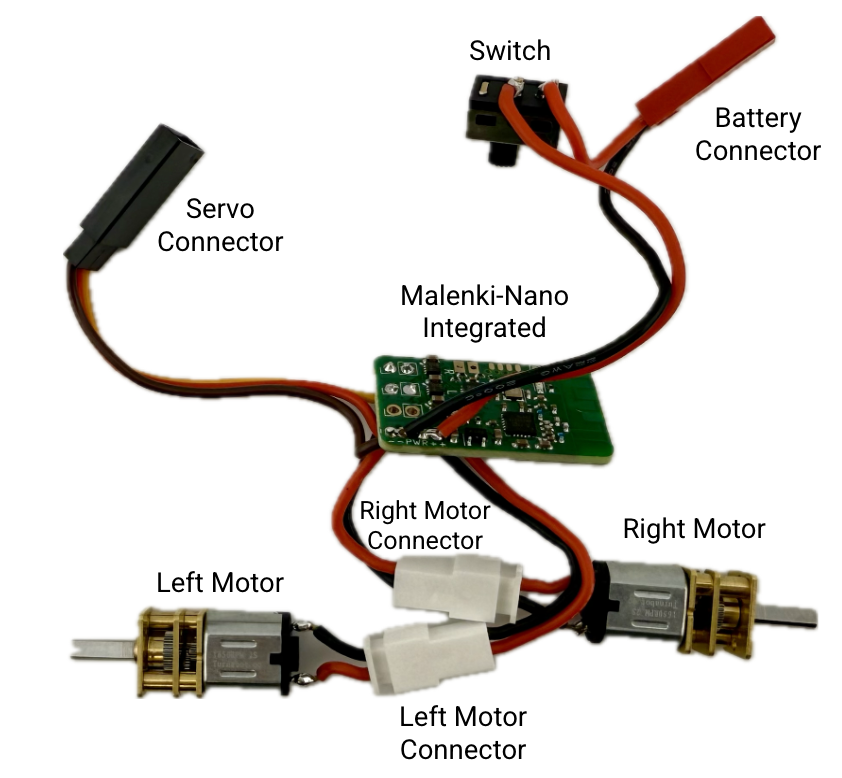Turnabot
Malenki-Nano
Malenki-Nano
Couldn't load pickup availability
The Malenki-Nano-Integrated (MNI) is a triple brushed ESC + receiver combo using the AFHDS2A radio protocol.
It is a compact, lightweight, and highly capable option for combat bots, especially those 1lb and under.
The motor drivers are officially rated at 1.8 amps per channel (Right Drive, Left Drive, and Weapon). Testing shows that they typically hit Over Current Protection near 2.2 amps.
The Malenki is rated for 1S-2S lipo batteries. Some components are rated for 12.0 volt. A fully charged 3S lipo is 12.6 volts. There are many users successfully running Malenkis on 3S, but please be aware that is beyond the ratings. The Malenki-HV is rated for 2S-4S batteries.
AFHDS__ ≠ AFHDS2A
(the "2A" is important, please make sure that your radio supports the AFHDS2A protocol)
🔹 Radio Compatibility
-
Compatible with many FlySky and Turnigy transmitters that support AFHDS2A (not AFHDS).
-
Also works with most OpenTX radios.
-
Works even with transmitters that can’t mix steering, thanks to internal configuration options.
🔹 Features in the MNI Version
-
Integrated micro-crystal radio module – thinner profile, lower failure risk, 0.2g lighter.
-
Power Distribution solder-rings – easier and cleaner power wiring.
-
Larger solder pads – simplifies soldering with high-strand-count wires.
-
PWM pads on both sides – more flexibility in wiring layout.
🔹 Output Channels
-
3 brushed ESCs (TESC = Triple ESC)
-
2 PWM outputs, each can drive a servo or brushless ESC.
🔹 Configuration Options
-
Enter config mode by powering on the Malenki 5 seconds before the radio, then sending Hi-Low pulses on Channel 5.
-
Options include:
-
-
Reverse left/right drive sides
-
Disable mixing
-
Disable braking
-
Enable servo-stretching (with caution)
-
🔹 100% Steering Mix Mode
-
Choose internal 100% steering mixing instead of the default 50%.
-
Ideal for users with radios that can’t increase steering mix in the transmitter.
-
Dial down steering via Dual Rates or endpoints on your radio if needed.
If you have any questions about your Malenki, please send us clear pictures of both sides of the Malenki and a picture of your overall wiring harness. We will do our best to help you troubleshoot it.
Malenki Soldering Video Chapter
Malenki Configuration Video Chapter
Care Instructions
Care Instructions
Shipping & Returns
Shipping & Returns














